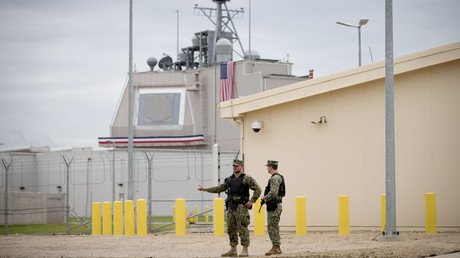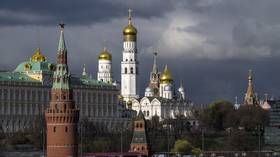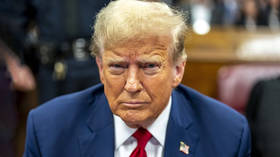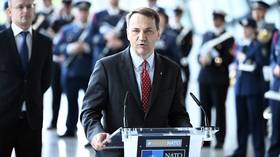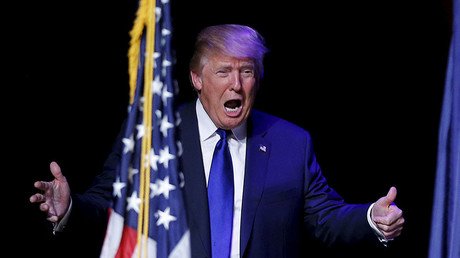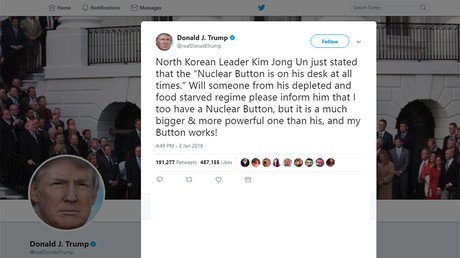Trump’s new nuke ‘posture’: Draft allows nuclear response to conventional attack and new warheads
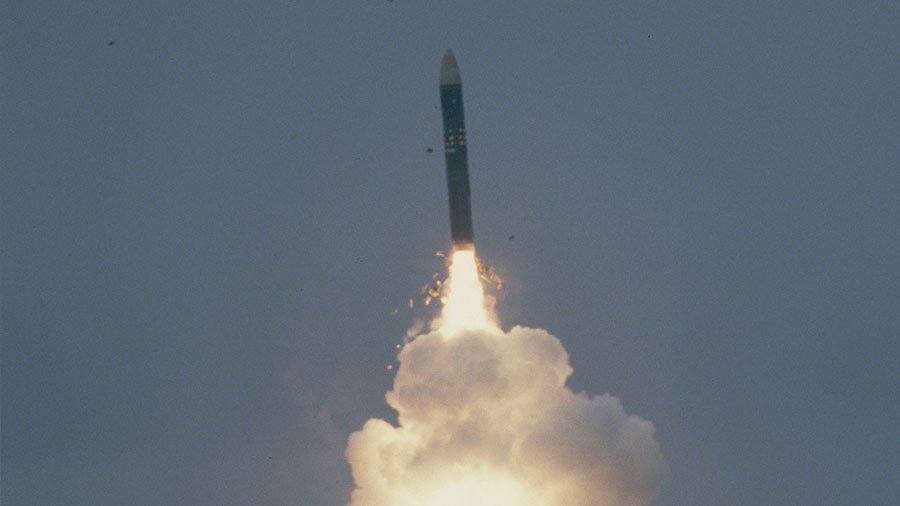
The Trump administration is expected to reveal a new, hawkish nuclear doctrine, which reportedly incorporates more cases in which it would use nuclear weapons, and also mandates the development of smaller-yield, simpler warheads.
The new Nuclear Posture Review (NPR) is expected to be revealed sometime after President Donald Trump’s state-of-the-union address in late January and will be the first update of the key strategy document in eight years.
According to Jon Wolfsthal, a former special assistant to Barack Obama on arms control and non-proliferation, the final draft that he reviewed is pretty hawkish, but some of the more aggressive suggestions from the initial variant have been dropped. Wolfsthal described the document to The Guardian.
“My read is this is a walk-back from how extreme it was early on. It doesn’t have as much terrible stuff in it as it did originally,” Wolfsthal said. “But it’s still bad.”
One of the key changes to the US policy would be an expansion of circumstances in which a nuclear attack would be considered. Under the new NPR, a conventional attack that causes mass casualties or targets critical infrastructure may trigger a nuclear retaliation from the US.
The Trump administration also wants to develop new types of nuclear warheads. One would be placed on Trident D5 submarine-launched ballistic missiles (SLBMs) and have just the fission part of a thermonuclear device, resulting in a smaller yield. Another would be a sea-launched nuclear-tipped cruise missile.
The stated goal for developing new types of weapons is that, if Russia engages in a conflict with NATO members in Eastern Europe, it would presumably use its tactical nuclear weapons early-on and hope that the US would hesitate to use its more powerful strategic nukes in response, out of fear of escalation.
This gamble theory contradicts Russia’s public military doctrine, which states that Russia would only use its nuclear arsenal in response to an attack with weapons of mass destruction, nuclear or otherwise, or a conventional attack threatening Russia’s existence as a sovereign state. Under the document, Russia would use tactical nukes against NATO only if NATO starts a war of aggression to topple the government in Moscow.
Russia’s posture doctrine was updated in 2014, amid growing tension with NATO, and perceives Russian tactical nuclear weapons as a way to balance out the alliance’s overwhelming supremacy over Russia in conventional forces.
Wolfsthal questioned the necessity for developing smaller-yield warheads, saying the US already has such weapons in its arsenal, in the form of B61 gravity bombs, some of which are stationed in Europe, and of air-launched cruise missiles.
The earlier versions of the US draft included proposals to develop nuclear hyper-glide weapons and to remove assurances to non-nuclear nations that the US would not attack them with its nuclear weapons, but these were dropped, Wolfsthal said.
US strategists may believe that relaxing restraints on the use of nuclear weapons may give Washington more flexibility, but the erosion of its strategic deterrence in the long run will not make America – or any other nation – safer, Adlan Margoev, a nuclear nonproliferation expert at Moscow-based global security think-tank PIR-Center told RT.
“The use of nuclear weapons was long considered something unthinkable by the public, with neither Russian nor American leadership perceiving a nuclear attack even with a single warhead as an option,” he explained. “The people who propose limited use of nuclear weapons are eroding the fear of nuclear weapons and the global destruction they can cause. Enshrining such a view in the US nuclear doctrine would impact negatively global strategic stability.”

